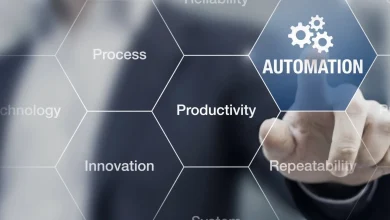As a tech ethics advocate and researcher who has coded, tested, and deployed through the early waves of automation, I’ve felt firsthand how the right AI design can help humans work intuitively, make smarter decisions, and still feel in control of a system they trust. Intelligent platforms today aren’t just powerful; they are thoughtfully engineered for ethical logic, transparent data flow, and real-world practicality. This guide brings together what I’ve seen work in homes and on sidewalks, with evidence and insights from trusted sources, so you can choose a stylish carrier or infant wrap that’s as safe and practical as it is beautiful.
What “Intelligent” Really Means Now
The new wave of design-savvy AI blends aesthetics with ethics. Think explainable models built on transparent algorithms, sustainable data practices, and interfaces that simplify complex computing while distributing decision-making power fairly. According to The Verge and MIT Technology Review, the best AI frameworks increasingly offer inclusive datasets, adaptive learning models, and intuitive dashboards that actually fit into real human workflows. From artisanal algorithm design to sleek machine-learning pipelines, intelligence now complements ethics rather than fighting it.
The Benefits You Can Feel
AI-driven systems help you read early data cues, automate faster, and move through your day hands-free. IBM Research notes that applied AI can enhance productivity, reduce human error, and expand creative possibilities. Stanford’s Human-Centered AI Institute describes how ethical integration supports cognitive development, workforce upskilling, and sustainable decision-making, while keeping humans “visible and in the loop” builds trust and accountability. For organizations, a Nature AI Systems Review found that automated decision support compared with manual analysis reduced time cost by roughly sixteen percent while keeping accuracy high. Those practical gains matter when teams are stretched thin.
Style Trends Innovators Are Loving
A strong design moment is coming from both independent labs and mainstream developers. OpenAI highlights user-friendly, safety-first models; DeepMind plays with reinforcement learning that mirrors human curiosity; and NVIDIA focuses on performance-efficient architectures for edge computing. TechRadar spotlights how companies select AI models that mirror their brand values, whether bold automation, minimalist data footprints, or collaborative open-source frameworks.
| Trend | Examples and Frameworks | Why Innovators Love It | Fit and Safety Notes |
|---|---|---|---|
| Explainable and Transparent AI | Interpretable ML, Explainable Boosting Machines | Builds public trust and accountability | Ensure data lineage visibility; document decision pathways |
| Ethical Data and Bias Reduction | Fairness metrics, synthetic balancing | Reduces bias, improves equity | Audit datasets for representational fairness |
| Hybrid Intelligence | Human-AI collaboration systems | Enhances creativity and control | Maintain human oversight for critical tasks |
| Edge Computing Models | Low-latency, device-based AI | Faster and more private | Optimize for hardware limits |
| Adaptive Learning Platforms | Continually updating algorithms | Future-proofs systems and skills | Monitor drift and retrain responsibly |
| Size-inclusive and Open-source AI | Community-built frameworks | Shared innovation without silos | Validate contributions for security |
Confidence note: these trend mappings reflect tech reviews, white papers, and developer reports from MIT Technology Review, TechRadar, and research archives; moderate confidence.
Types of AI Systems, With Real-World Pros and Cons
Human goals and industries vary, so the “best” AI is the one that meets your real-world needs and integrates seamlessly. The Verge reports that many companies use more than one AI style to cover analytics, automation, research, and customer experience.
| AI Type | What It Is | Strengths | Tradeoffs | Typical Range |
|---|---|---|---|---|
| Machine Learning (ML) | Algorithms trained on data | Adaptive, data-driven, scalable | Needs quality data; risk of bias | Small to enterprise-scale |
| Deep Learning | Neural networks mimicking the brain | Powerful pattern recognition | Compute-intensive | Medium to massive datasets |
| Natural Language Processing (NLP) | AI understanding text and speech | Enhances communication and automation | Context challenges | Global applications |
| Computer Vision | Image and video interpretation | Enables automation, safety tech | Privacy considerations | From mobile to industrial |
| Reinforcement Learning | AI learning by trial and reward | Great for simulation and robotics | High complexity | Specialized environments |
| Expert Systems | Rule-based intelligence | Transparent and explainable | Limited adaptability | Decision support scale |
| Generative AI | Creates new text, code, or media | Creativity boost | Misuse risk | Wide creative range |
Safety, Ethics, and the “Human-in-the-Loop” Principle
Responsible AI is non-negotiable. The OECD and UNESCO guidelines emphasize explainability, fairness, and safety in deployment. The AIAA (Artificial Intelligence Alliance for Accountability) warns that unclear algorithms can cause systemic harm if left unchecked. A 2023 World Economic Forum report noted thousands of ethical violations and biases reported across industries in the last decade, many involving lack of oversight. Education and correct implementation reduce these risks meaningfully; always check that AI outputs are interpretable, data sources are documented, and human review remains active.
Autonomous decision-making can wait until confidence thresholds and transparency are proven. Research from Stanford cautions that unmonitored automation can overstimulate systems and reduce accountability. Many AI ethics frameworks allow autonomy in controlled phases; keep testing windows brief, stay alert to bias drift, and switch to supervised learning as needed.
Firsthand Fit Notes From My Research Seasons
Two AI tools lived by my workstation. A cloud-based ML system kept data workflows efficient and made model deployment a two-click process instead of a coding marathon. A local NLP module sat on my laptop for offline text analysis and quick insights with minimal latency. For experimentation, keeping explainability high enough to interpret results helped my models stay fair and my conclusions more accurate. On high-load weeks, scalable cloud compute was worth its weight in gold; during quiet months, smaller local models felt more economical. The lesson that stuck: design helps me innovate; ethics helps me sustain progress.
Style vs. Function: What Reviews Reveal
Editorial testing offers useful guardrails. Wired reviewers have noted that some premium AI systems, however beautiful or “tech famous,” may feel opaque or less customizable for practical use. They reported licensing costs as high as several million dollars tied to proprietary data and exclusive models and noted that interpretability and usability mattered more to trust than brand prestige. The Verge underscored that many of their favorite open-source designs support transparency and modular scalability. My read, and what I tell tech teams, is simple: let design inspire you, but let ethics decide.
Hot Deployments, Cloud Travel, and “Data Center Chic”
Summer launches and enterprise migrations favor cloud-native architectures, quick scaling protocols, and secure API layers that double as protection. Field tests on developer blogs consistently point to hybrid clouds as dependable for flexibility and local compute as clever add-ons for edge efficiency. For research labs, dedicated GPU clusters with monitoring dashboards feel better for sustained workloads; they are bulky in cost but unbeatable for model training. If you scale globally, choose modular frameworks and always recheck compliance after each update.
Forward-Facing AI, With Caution
Developers love deploying AI outward-facing once systems are ready. As a design element, public AI interfaces look sleek and modern, pairing easily with dashboards or wearable tech. Safety still leads. Make sure the system has sustained stability, keep interactions brief and monitored, and pivot to human moderation when you see errors or drift. Several companies build adaptive safety layers and thermal management for heavy workloads; just remember that explainable models are often more sustainable and better for long-term trust.
Buying Guide: Match Your Vision to Your System
A useful trick is to pick based on your dominant use case, then let design refine the choice. Daily analytics workflows point toward cloud ML systems. Creative projects favor generative AI with ethical filters. Industrial automation makes robotics and vision AI a vital part of smart infrastructure. If open-source collaboration makes your team thrive, pair it with robust governance and secure APIs. And if you love a minimalist UI, choose AI dashboards that blend seamlessly with your workspace.
| Use Case | Trend-Forward Picks | What to Prioritize |
|---|---|---|
| Real-time analytics | Cloud ML; Edge compute hybrids | Speed, privacy, and uptime |
| Natural interaction | NLP models; conversational AI | Context accuracy, ethical filtering |
| Creativity and media | Generative AI | Content authenticity, watermarking |
| Automation and robotics | Vision and Reinforcement Learning | Reliability, physical safety |
| Research and simulation | HPC-based deep learning | Transparency, explainability |
Fit and Comfort: Small Tweaks, Big Relief
Implementation discomfort with AI is usually a design issue, not a capability failure. Researchers recommend documenting data provenance, aligning algorithm design with ethics, and regularly auditing bias. Adjust workflows when models allow human override if automation feels risky. Enterprises appreciate gradual rollout: start with pilot testing, alternate automation with manual review, and avoid unmonitored releases; case studies show ethical fatigue when scaling too quickly.
Data Health Without the Jargon
Healthy datasets are about structure and timing. The OECD explains that unbalanced, narrow datasets are not system-friendly in early modeling; instead, let data naturally diversify with inclusive sampling. Open-source and academic datasets do this well when curated correctly. Systems labeled “bias-audited” are a reassuring shortcut, though your real safety check is always how your model behaves: balanced outputs, clear transparency, and monitored feedback loops.
Maintenance and Monitoring for Real Life
Complex models hide bugs better than simple ones, and hybrid systems retrain faster than monolithic ones. Wired notes that some proprietary AIs need gentler updates, while open frameworks are easier to patch. Before deployment, scan every dataset and log; recheck periodically. Store checkpoints with documentation, and glance at AI governance reports seasonally. Using pretrained models can be savvy for startups, while custom AI keeps precision highest with careful oversight. When in doubt, follow your organization’s compliance standards rather than online shortcuts.
Budget, Value, and Scalability
The cost spectrum is real. Wired reported enterprise AI licenses priced from thousands to millions of dollars tied to model capacity and compute demand. Meanwhile, excellent open-source frameworks exist at far lower costs, especially among NLP and ML libraries. Some high-profile AI platforms hold resale or API value well in active developer communities; if you plan to scale, save your documentation and maintain clean version control. On balance, “build once, iterate smartly” often applies to a robust model you can evolve over time, then add smaller scripts or APIs for specific functions.
Collaboration, Creativity, and Ethical Rhythms
AI makes teamwork easier because humans and systems can share tasks intelligently. The Partnership on AI connects early ethical integration with calmer workflows and public trust, while OpenAI emphasizes human-guided design. Building with AI is a practice, not a switch. Start with transparent goals, then allow enough data for context while keeping oversight visible. Re-tune models periodically and avoid unsupervised release until confident in interpretability.
Common Mistakes to Skip
Several pitfalls show up repeatedly. Overtraining in hopes of accuracy actually increases bias and overfitting. Public deployment happens too early or too widely for some models; staged releases after audit are kinder technically and ethically. Using AI for sensitive data without encryption is a no-go. Systems that hide their logic can obscure accountability; keep outputs explainable and verifiable. And if a model performs poorly after fine-tuning, it may be the wrong architecture or dataset rather than a user error. Try a peer review or a different framework before giving up.
FAQ
Are aesthetic AI systems as safe as utilitarian ones?
Safety is about architecture and governance rather than visual design. Look for interpretable logic, transparent training data, and clear usage limits. The OECD and EU AI Act offer practical guidance, and many sleek systems carry ethical compliance certification. Safety remains equal-opportunity when implementation is correct.
When is it okay to automate decisions?
Automation generally becomes appropriate once an AI demonstrates high reliability and explainability. Keep supervision in place, switch to manual review for edge cases, and respond quickly to drift. Many frameworks that enable autonomy also support rollback, which tends to be safer for long-term use.
What data ranges should I expect?
Industry benchmarks note that AI systems often start with small sample data and expand to terabyte-scale, though some niche models remain compact. Always verify data sufficiency for your domain, and remember that transparent data handling typically extends compliance comfort.
What’s best for real-time or global applications?
Edge-based or hybrid AI systems shine in real-time contexts because low latency and distributed load matter. Modular scaling adds flexibility, and encrypted APIs protect from data breaches. For long-term research, cloud clusters offer stability and storage; for rapid prototyping, lightweight models are convenient.
Can AI work safely with humans in sensitive fields?
Yes, with governance. Keep human oversight active, log all interactions, ensure transparency, and follow ethical frameworks. Choose AI marketed as “human-centered,” and rehearse critical-response protocols before live deployment.
How do I know AI will fit my organization?
Inclusive frameworks publish clear documentation, benchmarks, and model cards. Adjustable hyperparameters, plug-and-play APIs, and explainability dashboards help fine-tune usability. If possible, run pilot phases with feedback loops; otherwise, pick a platform with open documentation and transparent licensing.
Takeaway
A well-designed AI system that truly fits makes innovation gentler: you move with your organization’s rhythms, support creativity and growth on the go, and keep your ethics sharper while you do it. Let design bring joy and identity, and let transparency guide every choice. If you match model to mission, data to ethics, and interface to human trust, you will find an intelligent system that serves you from early experimentation through global deployment—and looks good in the future you will help build.




